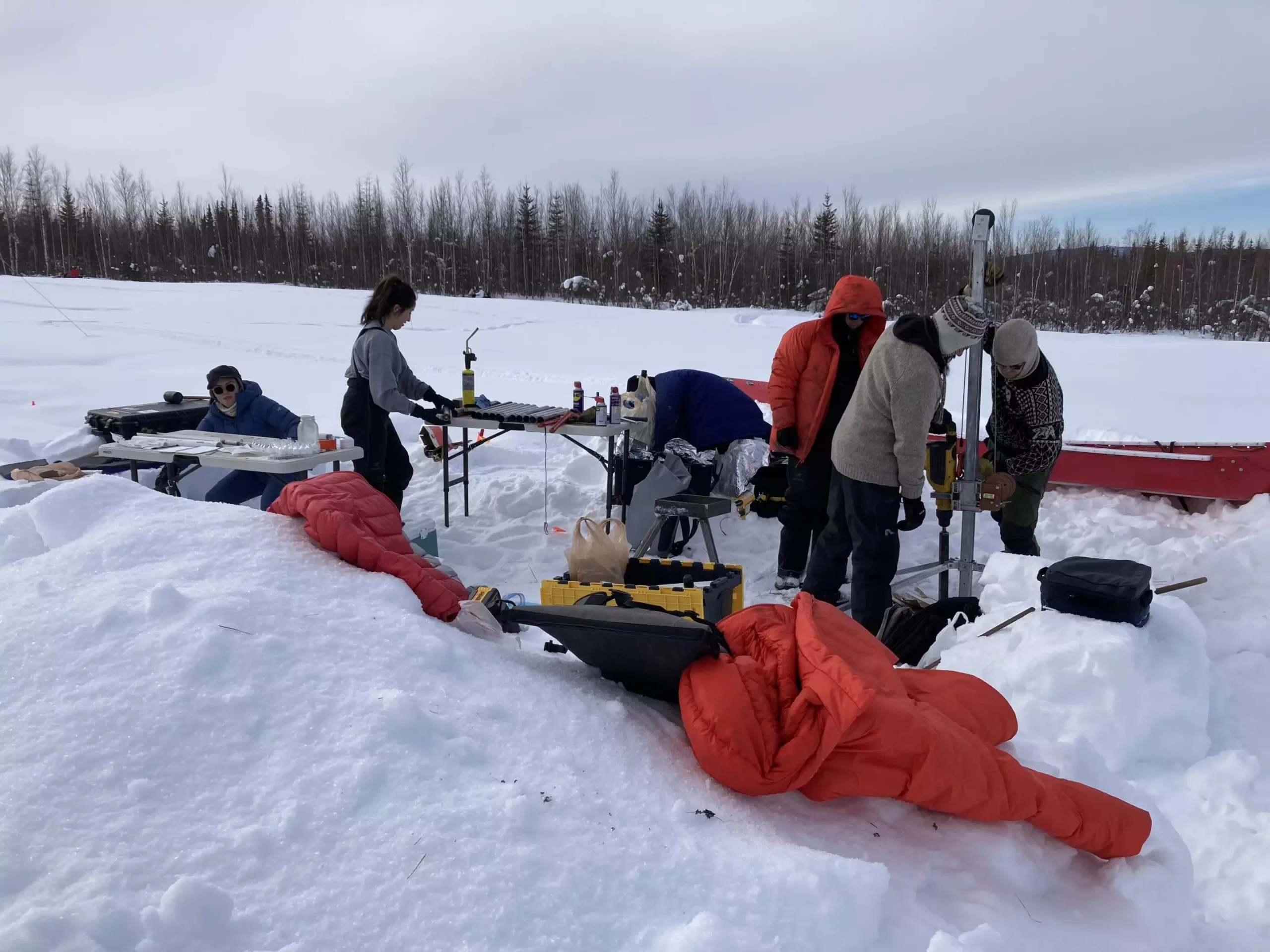For years, the concept of methane emissions primarily evoked images of wetlands and marshy terrains. This contention, however, was fundamentally challenged when Katey Walter Anthony, a limnologist and research professor at the University of Alaska Fairbanks, embarked on a surprising investigation into methane emissions in the Fairbanks region. Initially skeptical of claims that methane was being released from terrestrial areas, Walter Anthony found herself drawn into a deeper understanding of how upland landscapes might contribute to greenhouse gas emissions—a perspective often overlooked in climatic assessments.
The pivotal moment came when local tales of “turf bubbles,” where methane gas was ignited in Fairbanks yards, prompted Walter Anthony’s inquiry. Recognizing that while she had been focused on methane in aquatic ecosystems, this new evidence compelled her to survey nearby upland areas. The investigation yielded unexpected results: not only was methane present, but it emanated from forests and grassy landscapes in unprecedented quantities.
A Groundbreaking Study
Funded by the National Science Foundation, Walter Anthony and her team initiated an exhaustive study across the dry ecosystems of Interior and Arctic Alaska. Their findings, published in the esteemed journal Nature Communications earlier this July, revealed disturbing insights. Not only were upland ecosystems emitting methane at rates surpassing previous estimates from northern environments, but these emissions also consisted of ancient carbon, thousands of years old. This begs the question: How could established climate models have overlooked these critical methane sources?
In traditional climate science, methane emissions are predominantly linked to wetlands due to the microbial processes that thrive in low-oxygen, saturated soil conditions. However, Walter Anthony’s research unexpectedly overturned this notion, presenting evidence that methane emissions from well-drained upland sites could be as high as, or even exceed, those found in wetlands. Particularly harrowing was the revelation that winter emissions from these environments were notably higher, which poses significant risks as these cold months are typically associated with reduced biological activity.
Seeking to validate her findings beyond the confines of her initial observations, Walter Anthony and her colleagues expanded their research to cover 25 additional sites throughout Alaska’s varied terrain, including forests, grasslands, and tundra. Over a span of three years, the team collected comprehensive data on methane fluxes from more than 1,200 locations.
Through meticulous examination of soil characteristics and microclimate conditions, the researchers identified particular geological formations—taliks—as significant contributors to methane emissions. Taliks are pockets of soil that remain unfrozen year-round, allowing microbial processes to continue during the winter months. It became clear that these phenomena in upland areas could complicate the already multifaceted climate feedback loops associated with permafrost.
The implications of these findings extend beyond immediate observations. Walter Anthony highlighted how Yedoma soils, which span a mere 3% of the permafrost area but harbor over 25% of its total carbon, contain deeply buried carbon deposits. These deposits are crucial to understanding future climate scenarios because the unique combination of their geological composition and moisture levels creates conditions that favor methane-emitting microbes.
Researchers further determined that the increasing occurrence of thermokarst mounds—landforms created by the localized thawing of permafrost—was prevalent across Arctic regions. Projections suggest that these mounds will continue to proliferate with ongoing climate warming, setting the stage for wide-scale methane emissions from upland systems in the years to come.
As the findings from Walter Anthony’s team reverberate through the scientific community, the need for a paradigm shift in how researchers understand methane emissions is clear. The existing climate models, which have not fully accounted for the contributions of these upland environments, may significantly underestimate the potential carbon feedback loops tied to global warming.
Walter Anthony emphasizes the urgency of reevaluating scientific approaches to climate change, particularly as the reality of thawing permafrost looms closer. Her research underscores the importance of embracing a more holistic view of ecosystem interactions to better predict the trajectory of global climate change. The deeper understanding of how upland ecosystems contribute to methane emissions compels policymakers, scientists, and the global community to rethink how we approach climate mitigation strategies.
In closing, as our climate science evolves, so too must our strategies for addressing the challenges posed by greenhouse gases. Understanding and mitigating the implications of upland methane emissions will be crucial in our joint efforts to combat climate change in the decades ahead.


Leave a Reply